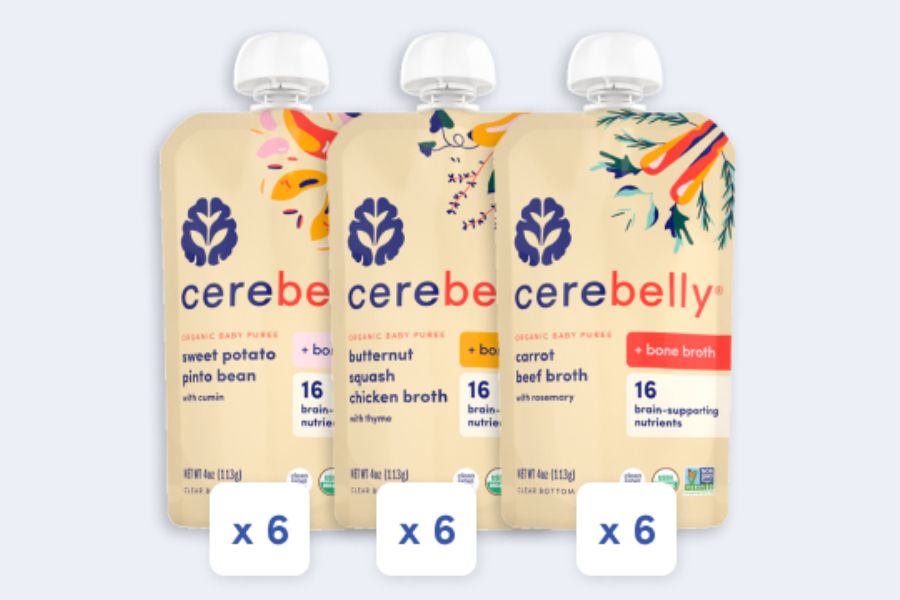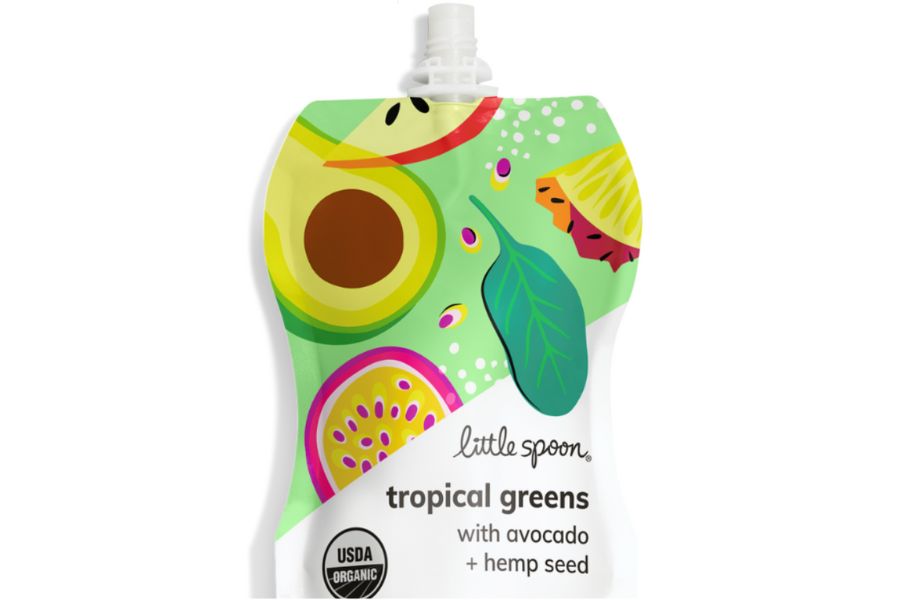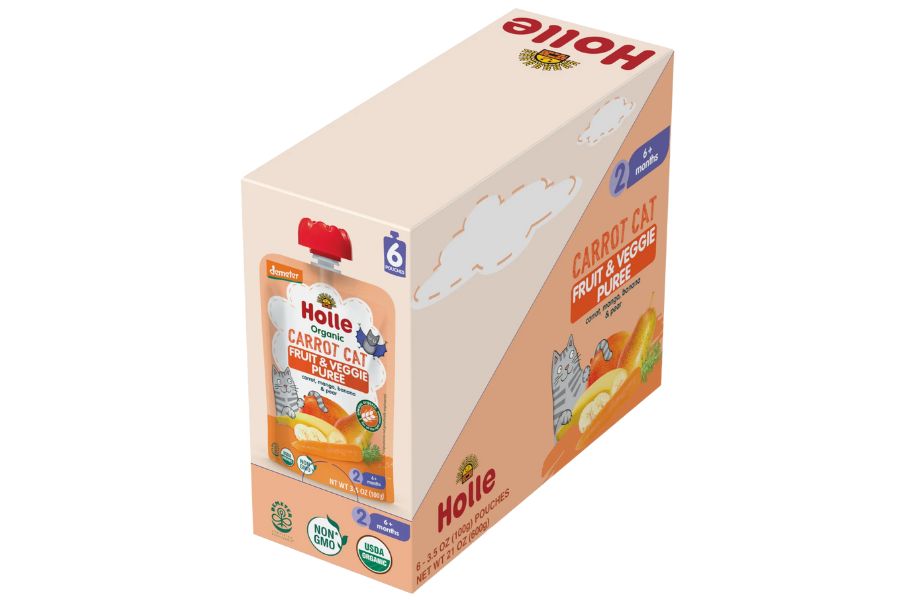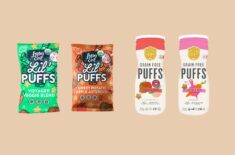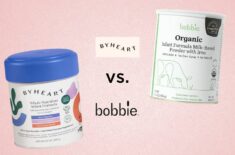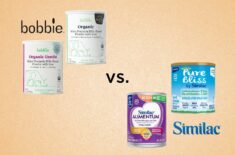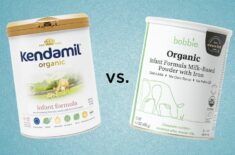Overview
Abbott Nutrition, the same makers of the recalled Similac baby formula, claims that their kids’ nutritional drink, PediaSure, is “clinically proven” to help kids grow and is the “#1 pediatrician-recommended brand.”
But is this really true? Or just good marketing aimed at influencing worried, unsuspecting parents?
Recently, one angry grandma sued the company for false advertising, alleging that PediaSure Grow & Gain didn’t make her grandson taller. Instead, the boy reportedly became overweight. (1)
The company refutes this grandma’s claim and stands by the integrity of their products. (1)
Our own research shows, however, that PediaSure might not be as effective of a product as the company claims it to be. It contains a lot of sugar, corn syrup, and other potentially questionable ingredients. It can also contribute to obesity. (2)
To make our position clear, Motherhood Community does not recommend PediaSure.
This is because we believe it to be an ultra-processed product that, according to research by the American Academy of Pediatrics (AAP), can lead to children becoming overweight and even obese. (More on this study below.)
Instead, we suggest providing your child healthy homemade smoothies and incorporating as many whole foods as possible into their regular diets.
What chemicals are in PediaSure, do doctors recommend the brand, and what healthier alternatives do we suggest? How can you effectively deal with picky eating for healthy growth? Read on to find out.
What’s PediaSure?
PediaSure is a supplemental nutrition drink that is claimed to complement a child’s diet. It is marketed as a product that boosts children’s growth and development.
The product is marketed for children 2-13 years old and is supposed to be “clinically proven” to help them grow.

(source: pediasure.com)
However, it’s important to note what the fine print shows: the study used for this claim was conducted on children at risk for malnutrition. The studies used by the company are also not of North American children, where their main market resides. They are, instead, of Filipino and Indian children, which makes a difference. Read on to learn why.
Otherwise healthy children might respond differently to the product.
Do Pediatricians Recommend PediaSure?
It’s clearly shown on PediaSure’s website that they claim to be the #1 pediatrician-recommended brand. This is also printed on the product’s packaging.
But is this a marketing move? Or a fact?
The AAP explains that they (pediatricians) only recommend nutritional supplements, such as PediaSure, for children who are unable to receive adequate nutrients from food. (2)
Why Might Doctors Recommend PediaSure?
Doctors might recommend PediaSure for children who have nutritional deficiencies. (2)
The product is packed with calories and nutrients that can help boost growth in malnourished children (the primary subjects of the brand’s study). It’s also high in added sugars.
Given this, it should be noted there are several higher-quality, less processed, zero-added-sugar alternatives to address caloric or nutritional deficiencies. (More on this below.)
Depending on the specific nutrition deficiency, you can incorporate more of certain foods that contain that particular nutrient or micronutrient. (You can also learn more about this below in detail.)
PediaSure Warnings From Pediatricians
A 2019 article published in the Innovations In Obesity Prevention section in the American Academy of Pediatrics journal found that over 35.4% of parents in the study chose PediaSure as part of their children’s regular diet in at least one meal or snack a day.
The researchers pointed out that because PediaSure is widely (and even misleadingly) advertised as a growth booster, parents might feel that their kids are at a disadvantage if they don’t consume these supplements. (2)
What’s alarming is that the researchers discovered that PediaSure users might be more likely to be obese or overweight than non-drinkers. (2)
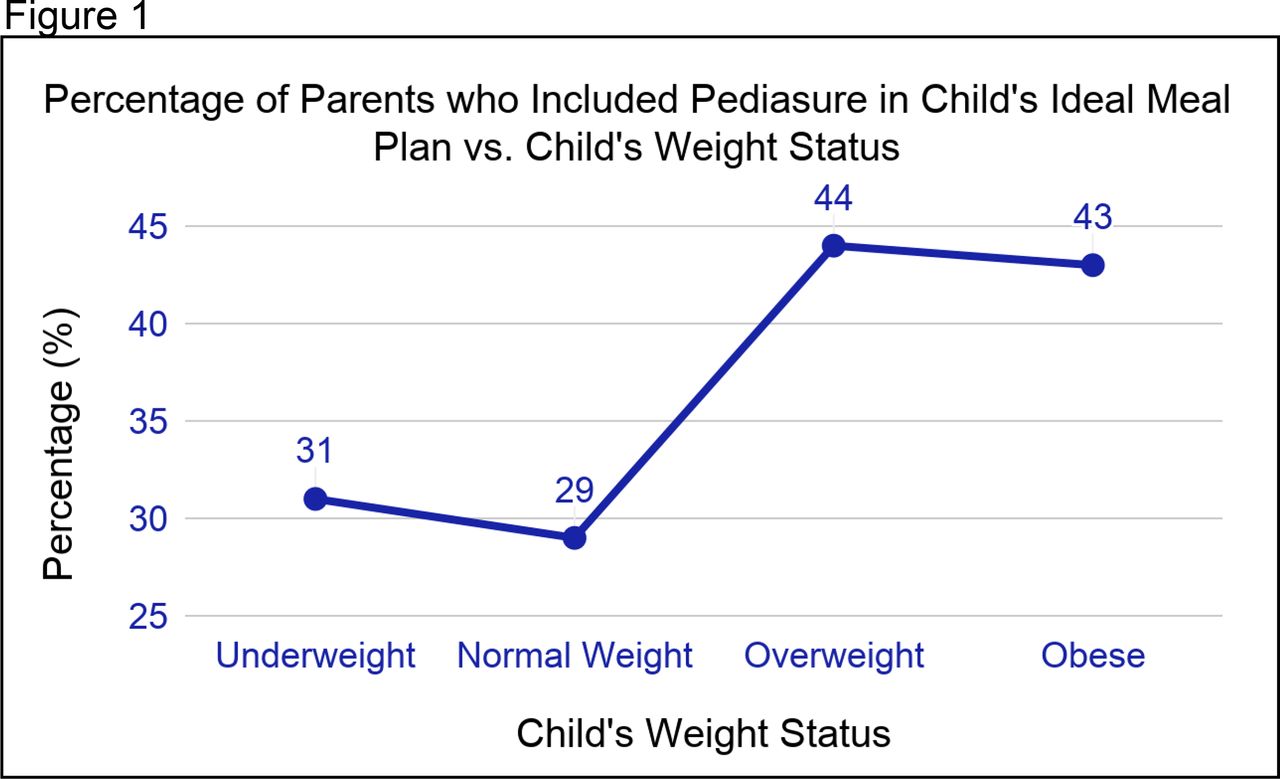
(source: American Academy of Pediatrics via publications.aap.org) (2)
The researchers recommend that pediatricians should do the following: (2)
- Discuss the truth about the brand’s “misleading advertising” with unsuspecting parents.
- Caution parents against the excess calories (particularly from sugar) kids can get if they take PediaSure even if they don’t need it medically. (2)
PediaSure Products & Things To Know
Here are the various PediaSure formulations:
- PediaSure Grow & Gain
- PediaSure Grow & Gain with Fiber
- PediaSure Grow & Gain Shake Mix
- PediaSure SideKicks
- PediaSure Peptide
- PediaSure Enteral 1.0 Cal
- PediaSure Enteral 1.5 Ca
The Grow & Gain products contain 240 calories (with 7 g protein) per 8-fl-oz serving, while Sidekicks has 180 calories (with 10 g protein) per 8-fl-oz serving.
Some things to know about PediaSure products, according to the manufacturer:
- Reconstituted Shake Mix can be used for supplemental tube feeding.
- PediaSure Grow & Gain with Fiber and PediaSure SideKicks contain prebiotic fibers (food for the good gut bacteria that can support a healthier immune system)
- Free from tree nuts or peanuts (common allergies)
- Gluten-free
Lawsuit Against PediaSure’s Growth Claims
In May 2023, Joanne Noriega filed a proposed class action lawsuit against Abbott Laboratories in a Manhattan federal court. She accuses the company of misleading customers with the height claims in their ads. (1)
Here’s a screenshot of the company’s growth claims listed on its site:
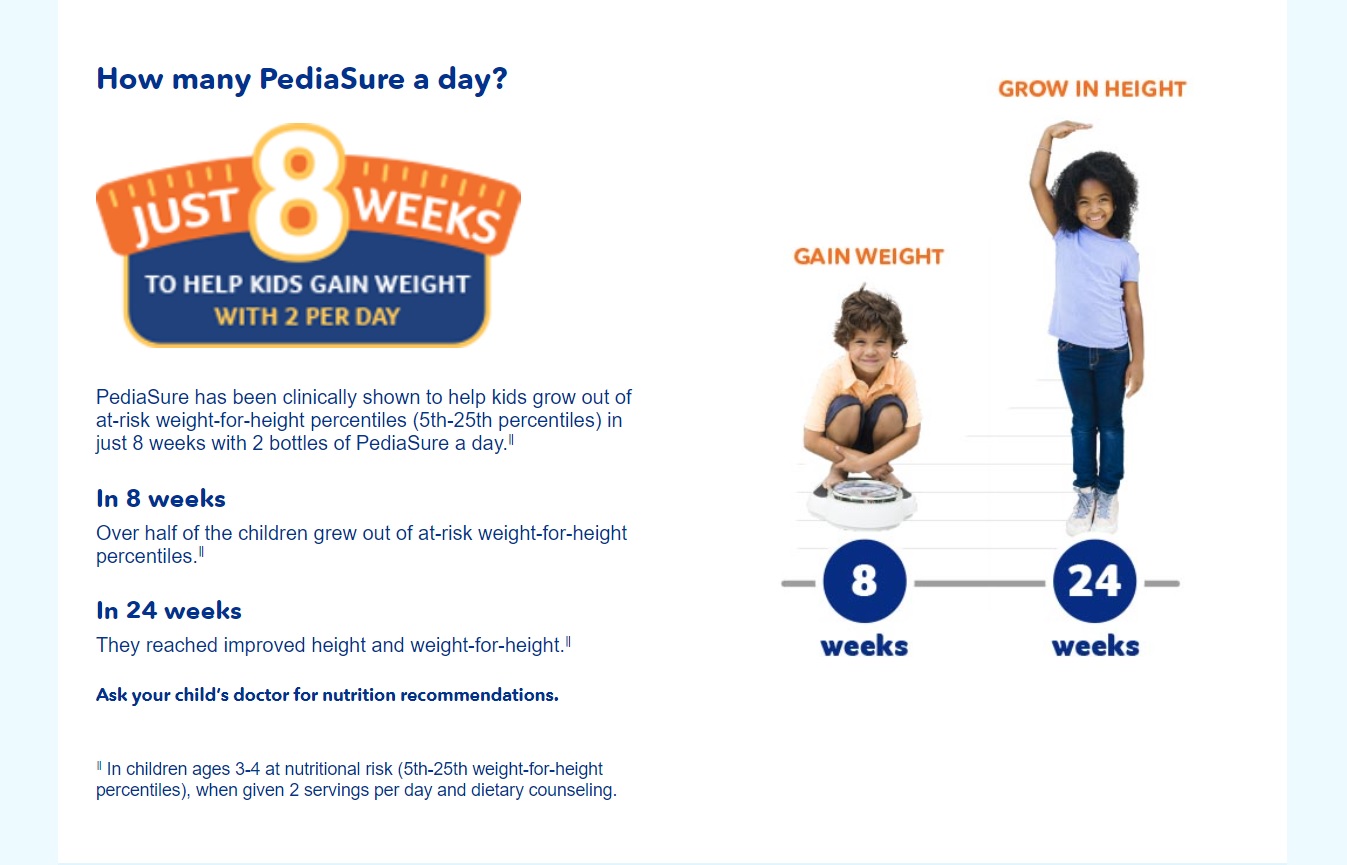
(source: pediasure.com)
Timeline behind Noriega’s lawsuit: (1)
- Doctors said that her 8-year-old grandson was “short for his age.”
- Believing the ad, she bought PediaSure Grow & Gain vanilla and strawberry drinks.
- For a year, the boy consumed the product twice a day. (That’s an additional 66g of carbohydrates and a whopping extra 18g of added sugar a day.)
- Despite regular PediaSure intake, the boy remained short for his age.
- The grandma claims that the boy became “so overweight” she stopped giving him PediaSure.
In the lawsuit, she claimed that PediaSure is simply a “flavored sugar and milk-based drink.” Although it has essential vitamins, she said that the product “isn’t a cure for shortness.” (1)
She added that the brand knows from its own studies that its “clinically proven” claim is misleading. (1)
The class action suit demands unspecified damages for New Yorkers who “overpaid” or were allegedly deceived by the brand. (1)
Abbott’s Response To The Lawsuit
Abbott says the case is “without merit” and stands by the product. (1)
“PediaSure is a scientifically designed complete and balanced nutrition solution for children to help support growth and development,” the brand insisted. (1)
Abbott claims the product has been clinically shown to help kids grow out of the “at-risk weight-for-height percentiles (estimated to be at 5th-25th percentiles)” within eight weeks of use. (1)
Sorry Abbott, but kids don’t need 9g of added sugar as a “complete and balanced nutrition solution.” (56)
Also to be noted, is that a lot of the clinical research Abbott cites are studies done on children in other countries like the Philippines and India. There doesn’t appear to be much information on North American kids, where the product is primarily marketed. (37) (38) (39)
This is important because the composition and makeup of Filipino and Indian children, along with their nutritional access and diet, are different.
Let’s compare some stats about the children in each country:
United States
The US has one of the world’s highest obesity rates: (53)(54)(55)
- Childhood obesity rates have tripled over the past three decades
- 19.7% or around 14.7 million children ages 2-19 are obese
- Close to 10% of infants (from birth to 2 years old) have a high “weight for recumbent length” (similar to BMI but used for babies)
- 12.7% obese children ages 2-5 years old
- 20.7% obese children ages 6-11 years old
- 22.2% obese adolescents ages 12-19 years old
India
Here are some alarming stats from India’s national survey: (44)(45)
- Indian children might be among the shortest in the world
- 38% of kids younger than age five are short for their age
- 36% are underweight or thin for their age
- 21% are overly thin for their height
- These children are considered “stunted” because they’re undernourished
- Surprisingly, about 14% of children living in urban areas might be obese (54)
Philippines
Here’s data from the World Bank and a 2022 study published in the Public Health Nutrition journal about Filipino children:(46)
- 29% of children younger than five years old are short for their age (also considered “stunted”)
- A gap of over 50% in child stunting exists between rich and poor kids
- 42.4% of children from the poorest financial sector are malnourished and stunted
- Only around 14% of the children from the upper 20% are stunted
Is PediaSure A Healthy Drink For Kids?
No. Although PediaSure might be recommended by physicians for children without access to proper nutrition, it isn’t a healthy drink. (2)
It’s important that parents be vigilant of misleading marketing tactics to position products like Pediasure as safe choices for kids’ nutrition.
It’s packed with sugar (one of the main ingredients) and other chemicals that can negatively affect children’s health. (2)
Is PediaSure Ideal For An Underweight Child Or A Picky Eater?
Based on the brand’s marketing, some parents might believe PediaSure can help an underweight child or boost a picky eater’s growth. (2)
Your child does not need this product for proper growth and development. (2)
Healthy, whole foods prepared at home are the best and most natural way to meet your kids’ nutritional needs.
Yes, it’s sometimes easier to choose ready-made products than always opting for homemade options.
As parents ourselves, we know that life can get hectic and sometimes, you just need grab-n-go options.
The following are MC-Approved organic choices that contain natural ingredients and, most importantly, zero added sugar:
- Serenity Kids Smoothie Pouches With Protein (Grass-Fed Collagen)
- Cerebelly Brain-Supporting Smoothie Pouches
- Little Spoon Smoothies
- Holle Fruit & Veggie Pouches
PediaSure, DHA Sources, & Your Child’s Brain Development
PediaSure contains DHA via highly refined tuna oil. DHA is a fatty acid linked to brain, visual, and cognitive development. Studies have shown that DHA can help improve school performance. (4)
There are other, more sustainable ways to get DHA. Tuna is also a high-mercury fish.
Feeding your child low-mercury, high-DHA fish like wild-caught sockeye salmon, cod, herring, trout, sardines, and anchovies are all solid choices.
Seafood like wild-caught shrimp, lobster, crab, and scallops are also good sources of DHA and EPA (omega fatty acids).
If you’ve got a picky eater, you can also try supplementing with:
- Nordic Naturals Algae Oil DHA supplement
- Nordic Naturals Children’s DHA supplement (with wild Arctic cod)
- Serenity Kids Wild-Caught Salmon pouch
Parenting hack: Try adding the DHA oil to babe’s smoothies and cooled soups, purées, or sauces.
Possible Side Effects Of PediaSure As A Nutritional Supplement
Negative Effects On Eating Habits
Studies show that children appear to be predisposed to like sweet-tasting foods but can dislike bitter things. (5)
Researchers believe this is possibly a survival instinct to help them prefer their mother’s milk but prevent them from ingesting potentially dangerous food (such as poison), which can be bitter. (5)
This preference for sugar slowly declines as they age, but researchers have also discovered that many children’s actual sugar intake exceeds the recommended limits. (5)
This can be because of early and regular exposure to sugary, sweet, and hyper-palatable foods, such as Pediasure.
Beware because researchers also point out that poor food choices dictated by children’s early taste preferences can lead to poor food choices and potentially chronic diseases later in life. (5)
Also, sugar is highly addictive!
In a 2018 study published in the Neuroscience & Biobehavioral Reviews journal, researchers explained that excessive sugar intake can lead to addiction because it affects the brain. This dependence can even lead to cravings, binging, and withdrawal behaviors like other addiction forms. (16)
Surprisingly, other studies have shown that sugar can be more addictive than cocaine. (36)
This can happen because sugar releases opioids and dopamine, similar to what some addictive drugs do. They can induce reward and pleasure triggers in the brain. (16)(36)
Possibility Of Unhealthy Weight Gain
Due to its high sugar and high-calorie profile, daily PediaSure intake can increase your child’s risks of obesity or becoming overweight. (2)
This is especially true if consumers follow the suggested two bottles of Pediasure daily as directed on the company’s website.
As mentioned previously, this equals to an additional 33g of carbohydrates and 9g of added sugars daily per serving – on top of other meals and snacks.
If your child is consuming other Pediasure products like the Grow & Gain Shake Mix, they’ll actually be consuming an extra 12g of added sugar per serving.
And as we’ve seen via the Pediatrics article on obesity prevention listed above, this has been shown to have a direct correlation to daily Pediasure usage.
Possible Missed Growth Issues
Being a picky eater and malnutrition aren’t the only reasons a child might be at a lower height percentile or experiencing growth problems.
Other possible causes of growth impairment can include: (6)
- Poor nutrient absorption
- Genetics or ethnicity (e.g., the family’s inherited height range, genetic disorders, etc.)
- Hormonal disorders (e.g., growth hormone deficiency)
- Systemic illnesses (conditions that affect the entire body)
- Illnesses affecting the heart, lungs, kidneys, and/or digestive tract
- Delayed puberty
- Certain height-affecting medical conditions (e.g., dwarfism, chromosome abnormalities. etc.)
Providing PediaSure as an “intervention” might give parents a false sense of security that any possible undetected growth issues are being addressed.
In reality, it’s important to determine the actual reason for the growth delay and get to the root cause. For example, growth hormone therapy might help address delays caused by this deficiency. (6)
What’s In PediaSure: Ingredients & Nutritional Content
PediaSure Grow & Gain (Shake Mix)

(source: pediasure.com)
One serving (five scoops mixed with ¾ cup water) contains the following:
Main Ingredients
- Corn syrup
- Sugar
- Blend of vegetable oils (canola, high oleic sunflower, and sunflower)
- Milk protein concentrate
- Corn maltodextrin
- Soy protein isolate
- Short-chain fructooligosaccharides (prebiotics)
- Less than 2% of other ingredients, including probiotics (Lactobacillus acidophilus)
Here’s the full ingredient list from the company website:
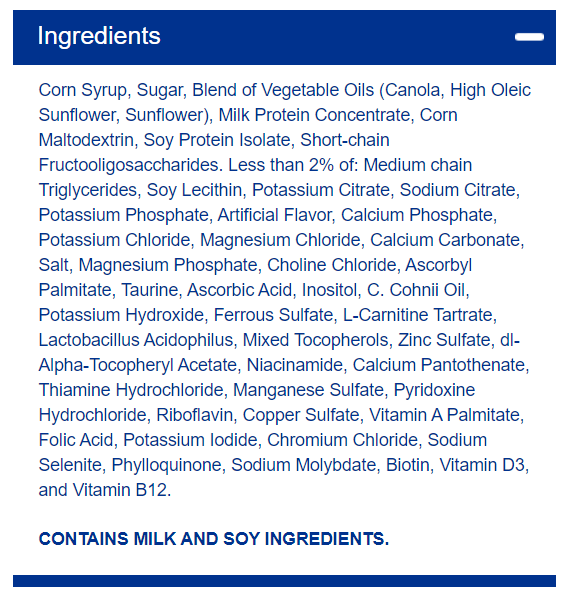
Warnings
- Contains highly processed corn syrup (as the first ingredient), sugar, and processed inflammatory oils like canola
- It also contains milk, which is a common allergen.
- It also contains soy ingredients, another allergen. (Note: There have been concerns about soy’s “feminizing” effect on boys because they’re rich in phytoestrogens, but recent studies show that soy intake isn’t likely to affect male reproductive hormones.) (50)(51)
- Also, lectins in soy and soy protein isolates can cause nausea, stomach upset, diarrhea, and vomiting. Some people might also experience gas, bloating, and constipation. (58)(59)
Nutritional Content
- Calories: 220
- Total fats: 9 g
- Saturated fats: 1.5 g
- Trans fats: 0 g
- Polyunsaturated fats: 2 g
- Monounsaturated fats: 4.5 g
- Cholesterol: 10 mg
- Sodium: 130 mg
- Total carbohydrates: 29 g
- Dietary fibers: <1 g
- Total sugars: 12 g
- Added sugars: 12 g
- Proteins: 6 g
Vitamins & Minerals – Based On% DV (Daily Values)
- Vitamin D: 3.6 mcg or 20%
- Vitamin A: 10%
- Vitamin C: 20%
- Vitamin E: 10%
- Vitamin K: 8%
- Thiamin: 45%
- Riboflavin: 30%
- Niacin: 15%
- Vitamin B6: 25%
- Folate: 20%
- Folic Acid: 45 mcg
- Vitamin B12: 20%
- Biotin: 10%
- Pantothenic Acid: 25%
- Choline: 10%
- Calcium: 180 mg or 15%
- Iron: 2.5 mg or 15%
- Potassium: 280 mg or 6%
- Phosphorus: 10%
- Iodine: 10%
- Magnesium: 6%
- Zinc: 10%
- Selenium: 10%
- Copper: 15%
- Manganese: 10%
- Chromium: 15%
- Molybdenum: 15%
- Chloride: 8%
PediaSure Grow & Gain (8-oz bottle or can) (source: pediasure.com)
(source: pediasure.com)
One serving (one 8-oz bottle or can) contains the following:
Main Ingredients
- Water
- Corn maltodextrin
- Blend of vegetable oils (soy, high oleic safflower)
- Sugar
- Milk protein concentrate
- Soy protein isolate
- Less than 0.5% of other ingredients, including tuna oil (for DHA), Stevia leaf extract sweetener, etc.
Here’s the full ingredient list from the company website: 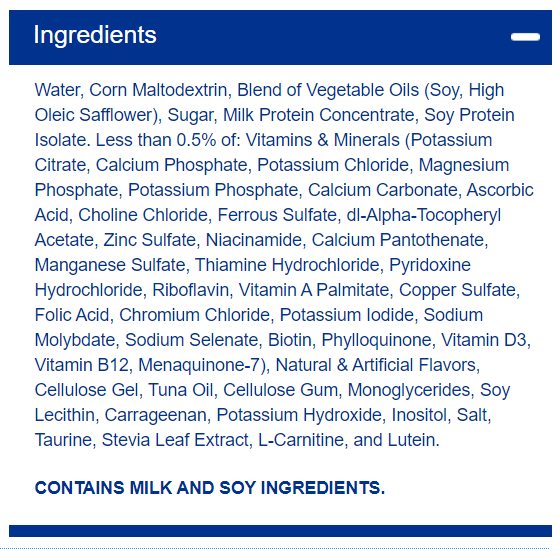
(source: pediasure.com)
Warnings
- Contains corn maltodextrin (as its second ingredient), sugar, and highly processed vegetable oils
- It also contains milk, which is a common allergen.
- It has soy, another allergen that might also cause stomach upset, constipation, diarrhea, vomiting, and nausea. (58)(59)
Nutritional Content
- Calories: 240
- Total fats: 9 g
- Saturated fats: 1.5 g
- Trans fats: 0 g
- Polyunsaturated fats: 3.5 g
- Monounsaturated fats: 3.5 g
- Cholesterol: 5 mg
- Sodium: 90 mg
- Total carbohydrates: 33 g
- Dietary fibers: <1 g
- Total sugars: 9 g
- Added sugars: 9 g
- Proteins: 7 g
Vitamins & Minerals – Based On% DV (Daily Values)
- Vitamin D: 6 mcg or 30%
- Vitamin A: 15%
- Vitamin C: 25%
- Vitamin E: 20%
- Vitamin K: 15%
- Thiamin: 25%
- Riboflavin: 25%
- Niacin: 20%
- Vitamin B6: 20%
- Folate: 15%
- Folic Acid: 36 mcg
- Vitamin B12: 20%
- Biotin: 25%
- Pantothenic Acid: 25%
- Choline: 15%
- Calcium: 330 mg or 25%
- Iron: 2.7 mg or 15%
- Potassium: 470 mg or 10%
- Phosphorus: 20%
- Iodine: 15%
- Magnesium: 10%
- Zinc: 15%
- Selenium: 15%
- Copper: 15%
- Manganese: 20%
- Chromium: 25%
- Molybdenum: 20%
- Chloride: 10%
PediaSure Grow & Gain (with fiber)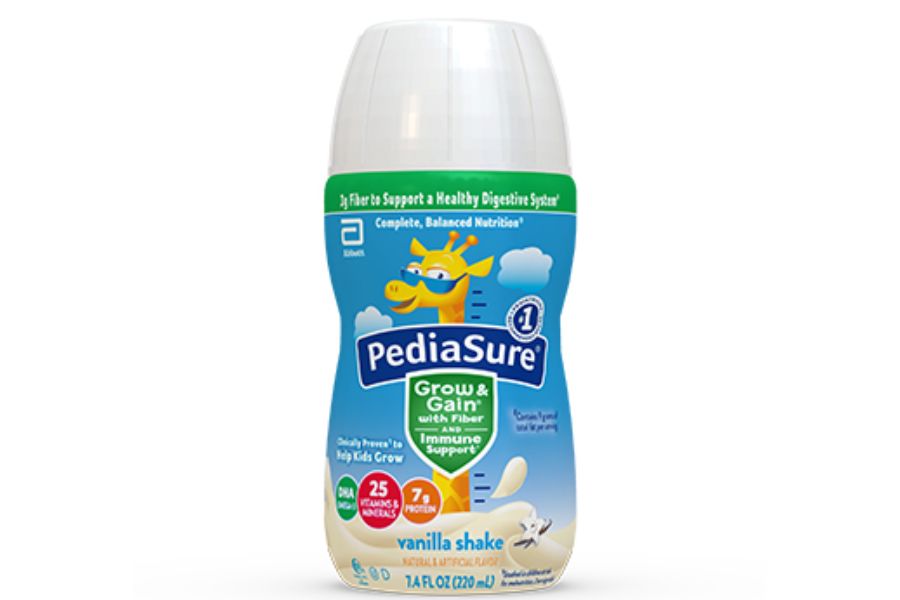 (source: pediasure.com)
(source: pediasure.com)
One serving (one 8-oz bottle) contains the following:
Main Ingredients
- Water
- Corn maltodextrin
- Sugar
- Blend of vegetable oils (soy and high oleic sunflower)
- Milk protein concentrate
- Short-chain fructooligosaccharides (prebiotics)
- Soy protein isolate
- Soy fiber
- Less than 0.5% of other ingredients, including Stevia leaf extract (a natural sweetener), tuna oil (for DHA), etc.
Here’s the full ingredient list from the company website: 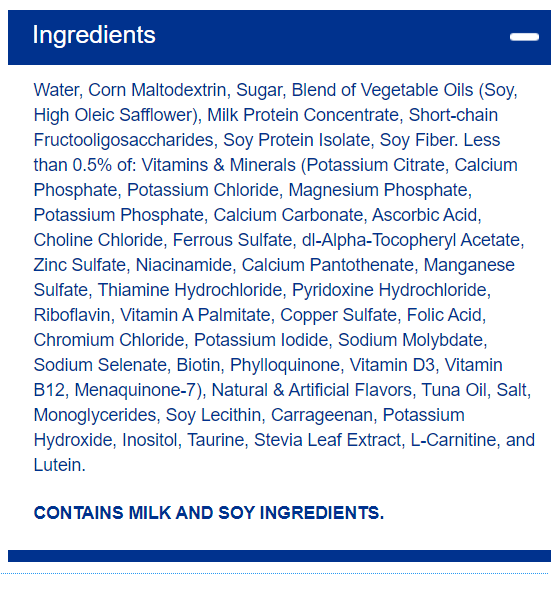
(source: pediasure.com)
Warnings
- Contains corn maltodextrin (as its second ingredient), sugar, and highly processed vegetable oils
- It also contains milk, which is a common allergen.
- It has soy, another allergen that can also cause stomach upset, vomiting, nausea, constipation, or diarrhea. (58)(59)
Nutritional Content + Vitamins & Minerals – Based On% DV (Daily Values)
It has the same nutrition values as the PediaSure Grow & Gain without fiber (8-oz bottle or bottle) listed above, except for the following (higher values):
- Dietary fibers: 3 g
- Total sugars: 12 g
- Added sugars: 12 g
PediaSure SideKicks
(source: pediasure.com)
One serving (one 8-oz bottle) contains the following:
Main Ingredients
- Water
- Sugar
- Milk protein concentrate
- Corn maltodextrin
- Blend of vegetable oils (i.e., canola, corn, and soy)
- Short-chain fructooligosaccharides (prebiotics)
- Soy protein isolate
- Less than 0.5% of other ingredients, including Stevia leaf extract
Here’s the full ingredient list from the company website: 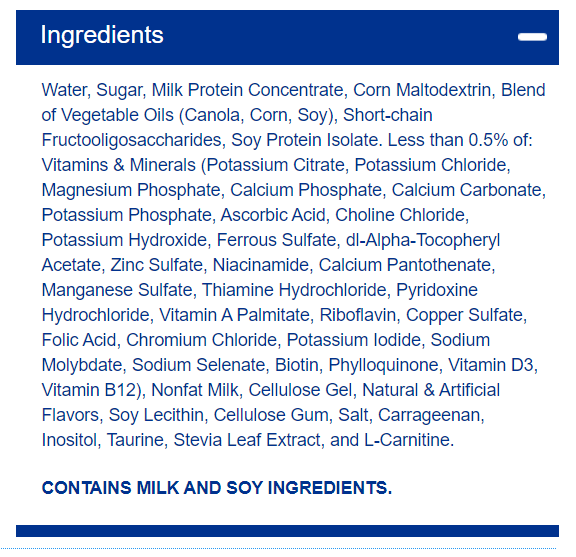
(source: pediasure.com)
Warnings
- Contains sugar (as the second ingredient), corn maltodextrin (as the third primary ingredient), and highly processed refined oils
- It also contains milk and soy (common allergens).
- Soy can also cause stomach upset. (58)(59)
Nutritional Content
- Calories: 180
- Total fats: 6 g
- Saturated fats: 1 g
- Trans fats: 0 g
- Polyunsaturated fats: 2.5 g
- Monounsaturated fats: 2.5 g
- Cholesterol: 10 mg
- Sodium: 90 mg
- Total carbohydrates: 23 g
- Dietary fibers: 3 g
- Total sugars: 12 g
- Added sugars: 11 g
- Proteins: 10 g
Vitamins & Minerals + Natural & Whole Foods With Similar Nutrition Content
It has the same vitamin and mineral content as the above-mentioned PediaSure Grow & Gain bottled products but with reduced calories.
You can also follow the same recommendations we listed for these products.
Recommendations: Whole, Unprocessed Food Sources
The following are some whole-food examples of natural sources of the same vitamins and minerals in listed in PediaSure:
Calcium sources: (7)(52)
- 1 cup whole almonds – 385 mg or 33% DV
- 8 oz yogurt – 344 mg or 27% DV
- 1.5 oz Mozzarella cheese – 333 mg or 26% DV
- 1 cup milk – 299 mg or 23% DV
- 3 oz canned pink salmon solids with bones – 181 mg or 14% DV
- 2 tbsp chia seeds – 179 mg or 13% DV
Iron sources: (8)
- 3 oz beef liver – 5 mg or 28% DV
- ½ cup lentils- 3 mg or 17% DV
- ½ cup spinach– 3 mg or 17% DV
- 3 oz beef – 2 mg or 11% DV
Potassium sources: (9)
- 1 cup cooked lentils – 731 mg or 16% DV
- One medium potato – 610 mg or 13% DV
- ½ of an avocado – 487 mg
- One medium-sized banana – 422 mg or 9% DV
- 3 oz beef (top sirloin) – 315 mg or 7% DV
- One medium-sized raw tomato – 292 mg or 6% DV
Phosphorus sources: (10)
- 6 oz yogurt – 245 mg or 20% DV
- 1 cup milk – 226 mg or 18% DV
- 3 oz salmon – 214 mg or 17% DV
- 3 oz scallops – 201 mg or 16% DV
- 3 oz chicken – 182 mg or 15% DV
- 3 oz beef – 172 mg or 14% DV
- One medium-sized potato (skin on) – 123 mg or 10% DV
Iodine sources: (11)
- 3 oz cod – 158 mg or 106% DV
- 5 g seaweed / nori – 116 mg or 77% DV
- 3 oz cooked oysters – 93 mg or 62% DV
- 1 cup milk – 85 mg or 57% DV
- ¾ cup Greek yogurt – 87 mg or 58% DV
- One large egg – 26 mcg or 17% DV
- 1 oz cheddar cheese – 15 mcg or 10% DV
- 3 oz beef liver – 14 mcg or 9% DV
- 3 oz shrimp – 13 mcg or 9% DV
Folate sources: (12)
- 3 oz beef liver – 215 mcg or 54% DV
- ½ cup dark leafy greens (like spinach, kale, and arugula) – 131 mcg or 33% DV
- Four spears asparagus – 89 mcg or 22% DV
- 1 cup romaine lettuce – 64 mcg or 16% DV
- ½ cup avocado – 59 mcg or 15% DV
- One small orange – 29 mcg or 7% DV
- ½ cup papaya – 27 mcg or 7% DV
- One medium-sized banana – 24 mcg or 6% DV
- One large egg – 22 mcg or 6% DV
- ½ cantaloupe – 17 mcg or 4% DV
Vitamin C sources: (13)
- One cup pineapple fruit – 78.9 mg or 88% DV
- One medium-sized orange – 70 mg or 78% DV
- One medium-sized kiwi – 64 mg or 71% DV
- ½ cup green bell pepper – 60 mg or 67% DV
- 1 cup tangerines – 52.1 mg
- ½ cup cooked broccoli – 51 mg or 57% DV (½ cup raw broccoli has 39 mg or 43% DV)
- ½ cup strawberries – 49 mg or 54% DV
- ½ cup Brussels sprouts – 48 mg or 53% DV
- One lemon – 44.5 mg
- ½ medium-sized grapefruit – 39 mg or 43% DV
- 1 cup raspberries – 32.2 mg
- ½ cup cabbage – 28 mg or 31% DV
- ½ cup cauliflower (raw weight) – 26 mg or 29% DV
- 1 cup blueberries – 14.4 mg
Vitamin E sources: (29)
- 1 oz sunflower seeds – 7.4 mg or 49% DV
- 1 oz hazelnuts – 4.3 mg or 29% DV
- ½ cup leafy, green vegetables (like kale and spinach) – 1.9 mg or 13% DV
Vitamin D sources: (30)
- 1 tbsp cod liver oil – 1,360 IU
- 3 oz trout – 645 IU
- 3 oz salmon – 570 IU
- One large egg – 44 IU
- 3 oz beef liver – 42 IU
- Exposure of skin to sunlight (during warm sun hours such as early in the morning, before noon)
Zinc sources: (31)
- 3 oz oysters – 32 mg or 291% DV
- Red meat (e.g., beef sirloin) – 3.8 mg or 35% DV
- 3 oz poultry (turkey breast) – 1.5 mg DV
- Nuts (e.g., almonds) – 0.8 mg or 7% DV
Protein sources: (32)
- Lean meats
- Fish and seafood
- Bone broth
- Collagen peptides
- Beans
- Cottage, cheddar, or ricotta cheese
- Eggs
- Greek yogurt
- Milk
- Nuts and seeds
- Fermented soy products like tempeh and tofu
Natural DHA (Omega-3 fatty acids) sources: (33)
- Almonds
- Anchovies
- Cashews
- Chia seeds
- Flaxseeds
- Halibut
- Hazelnuts
- Herring
- Mackerel
- Pistachios
- Pumpkin seeds
- Rainbow trout
- Salmon
- Sardines
- Seafood
- Walnuts
Natural Lutein sources: (41)
- Eggs
- Green beans
- Kale
- Spinach
- Broccoli
- Lettuce
- Kiwi
Natural choline sources: (42)
- Brussels sprouts
- Cruciferous vegetables (collard, brussels sprouts, broccoli, arugula, or cauliflower)
- Egg yolks
- Meats like beef and liver
- Mushrooms
- Chicken
- Fish
- Pork
- Cod
- Salmon
- Legumes
- Nuts
- Flaxseeds
- Milk
Questionable Ingredients In PediaSure
What Chemicals Are In PediaSure?
What’s alarming is that PediaSure contains corn syrup, sugars, and sugar derivatives.
- Corn syrup – High-fructose corn syrup is an added sugar that can increase appetite and promote obesity. It’s sweeter than regular sugar and more readily absorbed by the body. (34)
- Corn maltodextrin – It can increase risk factors for chronic inflammatory diseases, diabetes, obesity, and cardiovascular diseases. (14)(15)
- Natural & artificial flavors – Manufacturers must meet FDA regulations for artificial food additives. Still, while they’re technically safe for consumption, Motherhood Community’s philosophy is to minimize kids’ exposure to potentially unsafe chemicals by choosing whole food products over processed foods. Even ‘natural’ flavors contain chemicals. (57)
- Carrageenan – It’s FDA-approved for use in food and is commonly found in dairy products and processed foods. However, there’s debate over its safety, especially because some studies found it can cause inflammation and bowel disorders. (35)
High Sugar Levels & Corn Syrup Content
Abbott admits on the brand’s website that PediaSure contains high sugar levels because they aimed for a “kid-approved taste” when formulating the product. (3)
Instead of a product based on meeting children’s needs alone, they chose a sugary option because tests showed that kids preferred a sweeter taste. (Despite the well-known and commonly accepted adverse consequences of added sugar in kids’ diets.)
The truth is that added sugar and corn syrup make things more hyperpalatable and addicting to kids and adults alike.
Sugar is addictive because it affects the brain in a similar way to drugs. It’s even been shown in some studies to be possibly more addictive than cocaine. (16)(36)
The AAP and the AHA (American Heart Association) warn that excess consumption of added sugars contributes to the higher obesity prevalence in children (and adults). (17)(18)
This can lead to higher risks for: (17)
- All-cause mortality
- Cardiovascular disease
- Hypertension (high blood pressure)
- Insulin resistance
- Type 2 diabetes mellitus
- Fatty liver disease
- Dyslipidemia (imbalance of lipids in the blood)
- Dental decay
The AHA recommends a maximum of six teaspoons (25 g) per day of sugar consumption for children ages two to 18 years. (18)
The sugar content of PediaSure products can go as high as 18-24 g per serving if you follow the recommended two servings.
When looking at the label, note that “added sugars” also come in different names: (19)
- Brown sugar
- Corn sweetener
- Corn syrup
- Dextrose
- Fructose
- Glucose
- High-fructose corn syrup
- Honey
- Lactose
- Malt syrup
- Maltose
- Molasses
- Raw sugar
- Sucrose
A Note About Milk Allergy
All PediaSure products have milk proteins. Avoid this product if your child has cow’s milk allergies.
Lactose Content
The product is rated as “suitable for lactose intolerance” on the website but can still contain less than 4 g of lactose per liter (or less than 0.5 g per serving). (3)
Abbott claims that PediaSure’s lactose content is within the levels that don’t represent a medical concern for lactose-intolerant individuals.
Does PediaSure Have Artificial Growth Hormones?
No. According to Abbott, none of the PediaSure products contain artificial growth hormones.
Highly Processed & Inflammatory Oils
There are concerns that refined and highly processed oils such as canola can contain harmful fats produced during manufacturing. (20)
What’s alarming is that, according to Heart.org, products can actually be declared as “0 grams of trans fats” even if they contain as much as 0.5 g of trans fat per serving. (21)
The oils used in Pediasure, like canola oil, are known to be highly inflammatory. (43)
Possible GMOs?
PediaSure declares that its products, especially the shake mix, are free from GMOs.
However, because all these products also contain corn maltodextrin (GM corn is a common source of maltodextrin), some parents are concerned that this might mean hidden or undeclared GMOs are contained in products. (22)
DHA In PediaSure
The DHA in PediaSure is derived from tuna oil. However, the brand explains that this tuna oil is “highly refined by processing, bleaching, and deodorizing.”
Still, there are concerns about how the oil refining process uses various chemicals and affects the end product. (24)(25)
Caffeine
Believe it or not, there’s actually caffeine in PediaSure’s chocolate-flavored formulations.
Although it’s just 10 mg per 8-oz serving, and there aren’t any federal guidelines or limits in the US, the AAP discourages kids’ caffeine intake. (26)
Be warned that caffeine is a stimulant. Although 10 mg is still considered “low,” caffeine has a dose-response effect. This means it can have a stronger impact on kids because of their smaller bodies, especially at higher or daily doses. (26)
Too much caffeine can generally cause the following: (26)
- Sleep disturbance
- Higher blood pressure
- Increased heart rate
- Acid reflux
- Anxiety
Possible Excessive Intake Of Fortified Vitamins & Minerals
Fruits, vegetables, and other whole foods are rich in naturally occurring vitamins and minerals. If your child is already getting enough of these nutrients from whole food, those they get from supplements may be in excess.
Although these nutrients are important for wellness, studies have shown that excessive vitamin intake may also increase obesity risks. (27)
We recommend reducing or eliminating fortified vitamins and minerals as much as you can. Growing little bodies and brains benefit from nutrients, vitamins, and minerals from real, natural, whole foods like fruits and vegetables.
Nutrients From Real Food vs. Fortified Vitamins & Minerals
Registered dietitian nutritionist and the founding director of the Kendall Reagan Nutrition Center, Melissa Wdowik, PhD., says there’s a difference in how our bodies process nutrients from real food vs. fortified vitamins and minerals: (40)
“By eating the whole food, essentially all of the nutrients come packaged already in balance with the other nutrients.
The body regulates the absorption, and so if you have vitamins or you have minerals or you have amino acids competing with each other, they do so at a really consistent rate with what the body needs – the body knows what to absorb and how much.”
In a U.S. News & World Report article, she further explains it like this: (40)
“If you get nutrients through fortification, in which vitamins and minerals are added to foods, these are often still well absorbed, sometimes even more readily than in their natural form. But the body doesn’t regulate absorption in the same way it does with whole foods. And, she notes, the form of the vitamin or mineral is often different from how it’s found in nature.”
Should I Use PediaSure To Supplement My Child’s Diet?
If your child is at risk for nutritional deficiencies or malnutrition, your doctor might recommend PediaSure.
However, food supplements such as PediaSure can do more harm than good for kids who receive adequate nutrition.
Also, we don’t recommend this product because of its harmful contents.
There are other alternatives to using this product to nourish your little one.
You can make a homemade smoothie that’s full of key nutrients. Try our Blueberry Cream Smoothie recipe or our Kiwi, Spinach, & Apple Smoothie recipe.
Or you can also opt for one of our carefully vetted recommendations below if you want a ready-made option.
Our Recommendations: Alternatives To PediaSure
Instead of PediaSure, you can prepare homemade smoothies (recipes linked above!), healthy soups, or other meals from whole foods for your littles.
Adequate quality proteins and healthy fats in a kid’s diet are essential for growth and development.
Some healthy foods to add to your child’s diet:
- Good fat sources like avocado, olive oil, ghee, and grass-fed organic cheeses
- Nuts and seeds (if there are no allergies)
You can also consult a nutritionist to guide you on the best foods to prepare for your child based on their nutritional needs.
We also recommend the following products:
Serenity Kids Smoothie Pouches
Serenity Kids Pumpkin Spice Dairy-Free Smoothie + Protein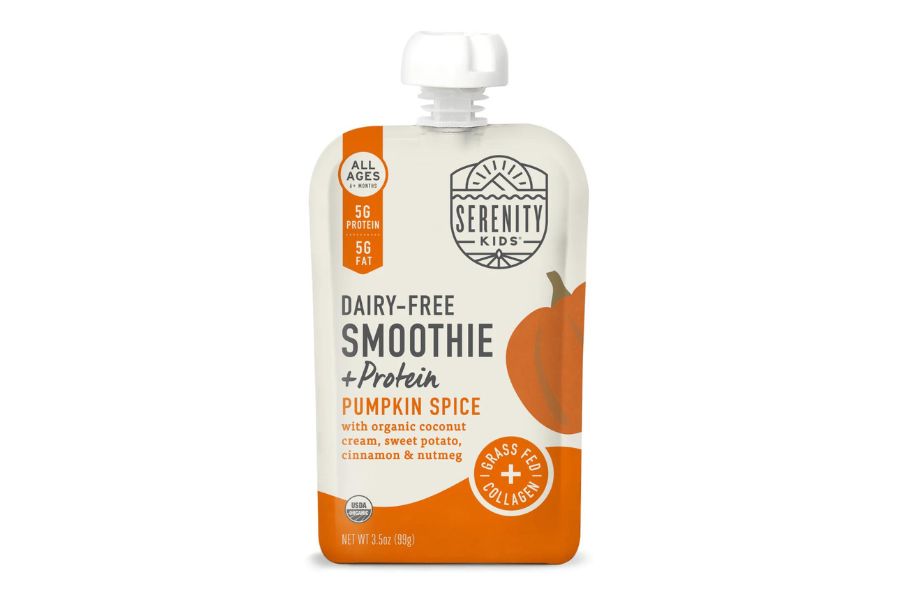



Serenity Kids Bone Broth Baby Food Variety Pack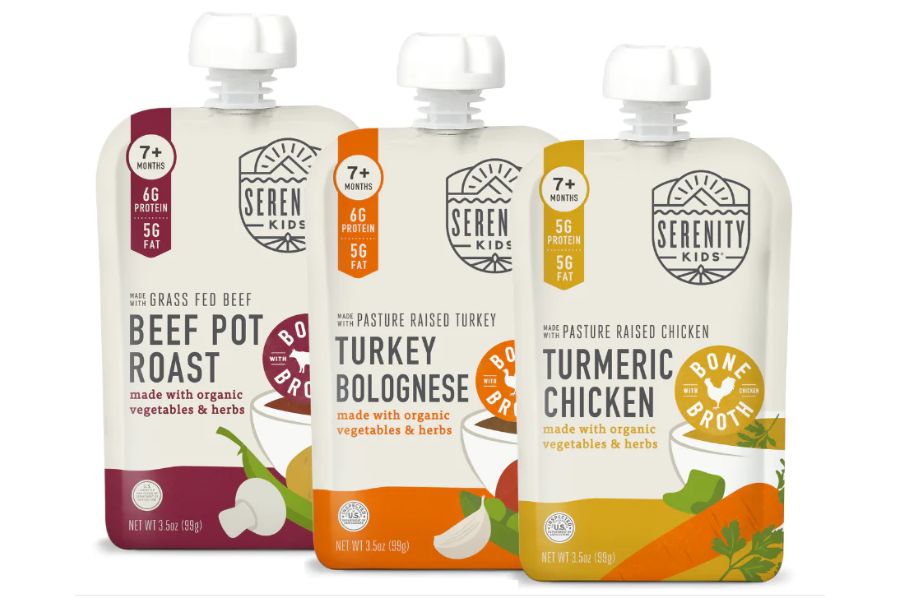



Cerebelly Smoothie Pouches
Cerebelly Bone Broth Protein Pack
Cerebelly Celery, Apple, & Kiwi Pack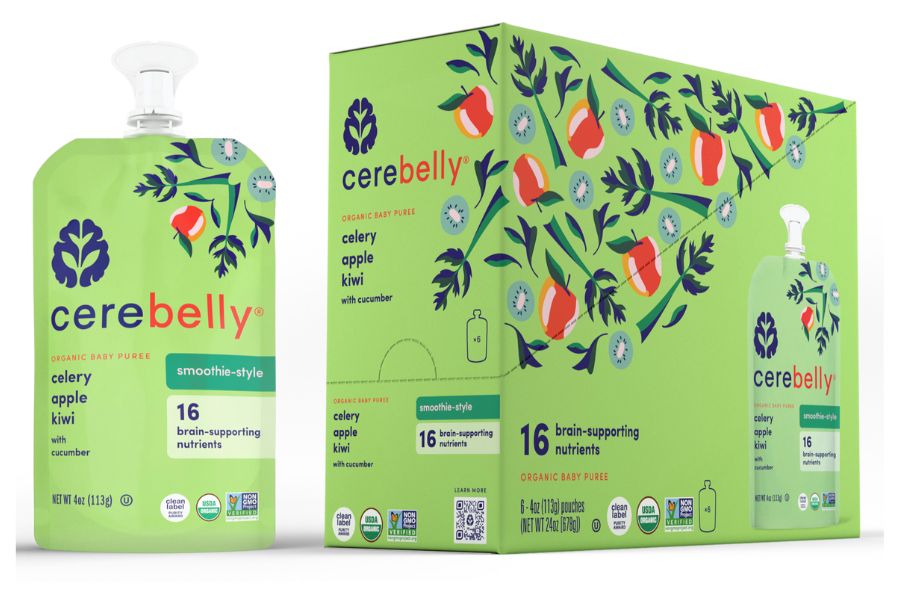




Little Spoon Smoothies
Little Spoon Strawberry Banana Shake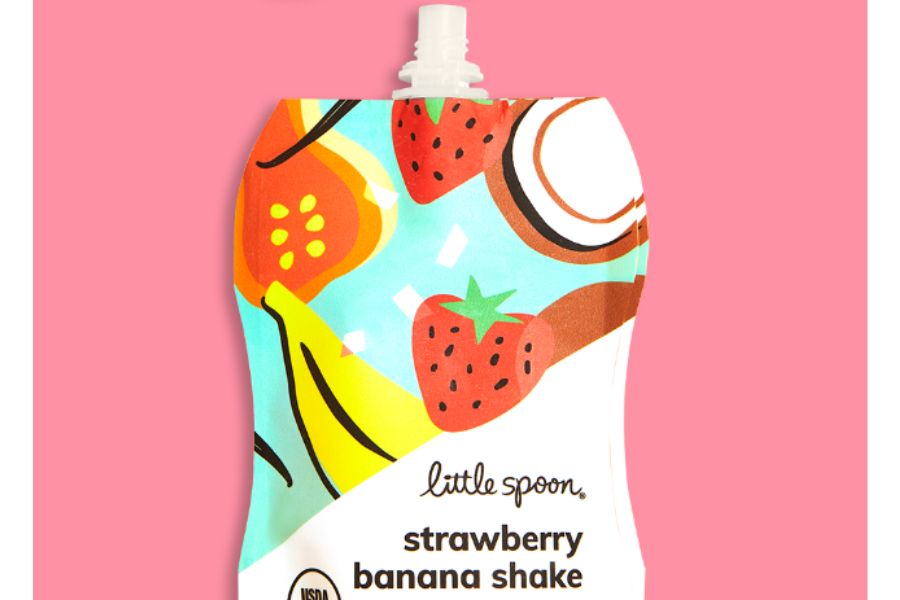

Little Spoon Tropical Greens
Holle Smoothies
Holle Baby Food Pouches – Carrot Cat (Organic Fruit & Veggie Puree)
Tips For Dealing With Picky Eaters
Importance Of The Flavor Window & Baby-Led Weaning (BLW)
When your child is younger and ready to start solids (around five months to 18 months), you can take advantage of the flavor window to support their palate development.
Whatever food flavors you introduce at this age range can build a strong foundation for a wide palate that can set them up later in life. This might be easier if you start with BLW (baby-led weaning).
While PediaSure doesn’t fit in this flavor window because it’s recommended for older kids, we’re adding this as a reminder to avoid processed, sugary, and excessively sweet foods as much as possible to avoid having a picky eater.
It’s best to offer real, whole food instead of processed foods.
For more tips on how to deal with picky eating and more info on the Flavor Window, check out our interview with Serenity Kids founders, Joe and Serenity.
Can Supplements Fill The Nutritional Gaps Of Picky Eaters?
Technically, yes. However, we’ve explained that products like PediaSure can contain a lot of sugar and unhealthy stuff, putting your child at risk for various medical conditions, including obesity, diabetes, and hypertension later in life.
Tips & Tricks: How To Deal With A Picky Eater
Should I Continue Giving Veggies To My Picky Eater?
Yes. Disliking bitter foods (including vegetables) is part of a child’s defense mechanisms against potentially harmful substances such as poison. (5)
But they can learn to love their veggies, especially if you get creative with how they’re presented.
You might have to offer veggies several times before your child warms up to them – this is okay and completely normal as your kid develops their palate.
Don’t be discouraged if they say no to the broccoli today – keep at it. It can take as many as seven or more exposures to a food before kids warm up to them.
We should also include here that modeling is the best way to mold your child’s palate. If they see mom and dad enjoying a wide array of vegetables, it’ll stick with them.
Will Bribery Make My Picky Eater Try Healthy Food?
Avoid bribery, especially using unhealthy “rewards” such as getting junk food if they eat veggies. It’s better to offer healthier rewards like going to the park or receiving star stickers.
How To Determine If My Kid Needs A Food Supplement?
If you’re concerned about possible growth problems or other health issues, consult your pediatrician instead of reaching for a PediaSure pack.
Your healthcare provider may test your child for underlying medical conditions or deficiencies before recommending food supplements or diet changes.
FAQs
Is PediaSure Considered A Meal Replacement?
No. Traditional use of PediaSure is as a supplement instead of a meal replacement.
PediaSure can be used as the sole source of nutrition in special, medically necessary cases, but only with close supervision from qualified medical professionals.
What’s The Earliest Age My Baby Can Drink PediaSure?
It’s intended for children who are at least two years old. (1)
According to the brand’s website, talking to a healthcare professional is important if your child is younger than two years old.
However, it isn’t intended for children one year of age and below.
Is It Okay To Drink PediaSure Every Day?
No. The product contains high sugar levels, which can cause different health issues. (17)(18)
What’s The Maximum Amount Of PediaSure My Child Can Drink In A Day?
Abbott claims that there isn’t a maximum but that you must consult your doctor for the recommended amount based on your child’s needs.
References
(1) https://www.reuters.com/legal/abbott-labs-is-sued-over-pediasure-height-claims-2023-05-15/
(2) https://publications.aap.org/pediatrics/article/144/2_MeetingAbstract/208/3364/Not-So-Sure-About-Pediasure-Assessing-the?autologincheck=redirected
(3) https://pediasure.com/nutrition-questions-answers
(4) https://www.ncbi.nlm.nih.gov/pmc/articles/PMC3738999/
(5) https://pubmed.ncbi.nlm.nih.gov/26002822/
(6) https://www.childrenshospital.org/conditions/growth-problems
(7) https://ods.od.nih.gov/factsheets/Calcium-HealthProfessional/
(8) https://ods.od.nih.gov/factsheets/Iron-HealthProfessional/
(9) https://ods.od.nih.gov/factsheets/Potassium-HealthProfessional/
(10) https://ods.od.nih.gov/factsheets/Phosphorus-HealthProfessional/
(11) https://ods.od.nih.gov/factsheets/Iodine-HealthProfessional/
(12) https://ods.od.nih.gov/factsheets/Folate-HealthProfessional/
(13) https://ods.od.nih.gov/factsheets/VitaminC-HealthProfessional/
(14) https://www.ncbi.nlm.nih.gov/pmc/articles/PMC6409436/
(15) https://www.ncbi.nlm.nih.gov/pmc/articles/PMC4940893/
(16) https://www.ncbi.nlm.nih.gov/pmc/articles/PMC2235907/
(17) https://publications.aap.org/pediatrics/article/143/4/e20190282/37217/Public-Policies-to-Reduce-Sugary-Drink-Consumption?autologincheck=redirected
(18) https://www.hsph.harvard.edu/nutritionsource/2016/08/23/aha-added-sugar-limits-children/
(19) https://www.healthychildren.org/English/healthy-living/nutrition/Pages/How-to-Reduce-Added-Sugar-in-Your-Childs-Diet.aspx
(20) https://www.hsph.harvard.edu/nutritionsource/2015/04/13/ask-the-expert-concerns-about-canola-oil/
(21) https://www.heart.org/en/healthy-living/healthy-eating/eat-smart/fats/trans-fat
(22) https://www.medicalnewstoday.com/articles/322426
(23) https://www.ncbi.nlm.nih.gov/pmc/articles/PMC7019307/
(24) https://www.redalyc.org/journal/4499/449956975010/html/
(25) https://happilyunprocessed.com/the-basics/refined-oils-and-why-you-should-never-eat-them/
(26) https://www.hopkinsallchildrens.org/ACH-News/General-News/Is-Coffee-Bad-for-Kids
(27) https://www.ncbi.nlm.nih.gov/pmc/articles/PMC3932423/
(28) https://riseandshine.childrensnational.org/microwave-safety-for-kids/
(29) https://ods.od.nih.gov/factsheets/VitaminE-HealthProfessional/
(30) https://ods.od.nih.gov/factsheets/VitaminD-HealthProfessional/
(31) https://ods.od.nih.gov/factsheets/Zinc-HealthProfessional/
(32) https://www.betterhealth.vic.gov.au/health/healthyliving/protein
(33) https://ods.od.nih.gov/factsheets/Omega3FattyAcids-Consumer/
(34) https://health.clevelandclinic.org/avoid-the-hidden-dangers-of-high-fructose-corn-syrup-video/
(35) https://www.ncbi.nlm.nih.gov/pmc/articles/PMC5410598/
(36) https://pubmed.ncbi.nlm.nih.gov/28835408/
(37) https://static.abbottnutrition.com/cms-prod/growthleadershipnetwork.com/img/pediasure-clinically-proven.pdf
(38) https://www.ncbi.nlm.nih.gov/pmc/articles/PMC4891560/
(39) https://journals.sagepub.com/doi/abs/10.1177/000992280304200304?journalCode=cpja
(40) https://health.usnews.com/wellness/food/articles/2017-05-11/how-does-getting-nutrients-from-fortification-compare-to-whole-food
(41) https://www.ncbi.nlm.nih.gov/pmc/articles/PMC3705341/
(42) https://www.hsph.harvard.edu/nutritionsource/choline/
(43) https://www.medicalnewstoday.com/articles/canola
(44) https://www.deccanchronicle.com/nation/current-affairs/130419/indian-kids-worlds-shortest-study.html
(45) https://dhsprogram.com/pubs/pdf/fr339/fr339.pdf
(46) https://www.worldbank.org/en/country/philippines/publication/-key-findings-undernutrition-in-the-philippines
(47) https://www.ncbi.nlm.nih.gov/pmc/articles/PMC9991861/
(48) https://www.ncbi.nlm.nih.gov/pmc/articles/PMC8983011/
(49) https://www.cdc.gov/mmwr/pdf/rr/rr5909.pdf
(50) https://kidswithfoodallergies.org/living-with-food-allergies/top-food-allergens/soy-allergy/
(51) https://pubmed.ncbi.nlm.nih.gov/33383165/
(52) https://www.medicalnewstoday.com/articles/322585#non-dairy-sources-of-calcium
(53) https://www.cdc.gov/obesity/data/childhood.html
(54) https://www.hsph.harvard.edu/obesity-prevention-source/obesity-trends-original/global-obesity-trends-in-children/
(55) https://www.nbcnews.com/health/health-news/americans-kids-are-obese-it-s-getting-worse-n851246
(56) https://news.usc.edu/trojan-family/help-kids-eat-less-sugar-usc-pediatrician-tips/#:~:text=How%20does%20sugar%20affect%20children’s,asthma%2C%20acne%20and%20even%20gout
(57) https://www.nytimes.com/2019/02/01/well/eat/are-natural-flavors-really-natural.html
(58) https://www.hsph.harvard.edu/nutritionsource/anti-nutrients/lectins/
(59) https://www.nccih.nih.gov/health/soy



